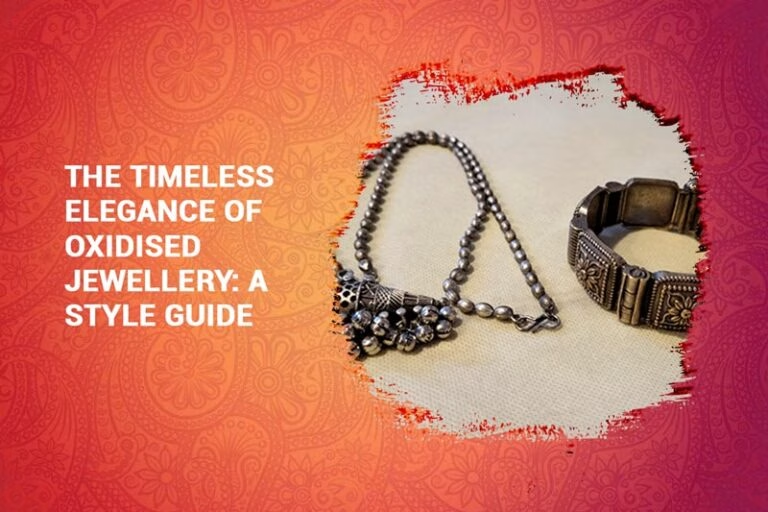Revealing the Elegance of Oxidized Silver: An Enduring Change
Silver, well-known for its enduring charm and versatility in both jewelry and decorative arts, undergoes a fascinating transformation when exposed to oxidation. This process, which results in silver acquiring a darker or antiqued appearance, has been utilized for centuries to enrich the aesthetic appeal and complexity of silver creations. Oxidized silver jewelry, in particular, has become popular for its unique appearance that harmonizes tradition with contemporary style.
Oxidation is a natural chemical reaction triggered when silver interacts with sulfur-containing substances present in the air or on the skin. This reaction leads to the formation of a layer of silver sulfide on the metal’s surface, presenting as a darkened or blackened patina. Instead of diminishing the silver’s attractiveness, this patina accentuates the intricacies of the design and introduces a compelling interplay of light and shadow.
Artisans employ diverse techniques to intentionally oxidize silver, carefully managing the process to achieve specific tones and effects. One prevalent method involves submerging silver in a solution that accelerates oxidation, enabling jewelers to darken recessed areas while preserving the shine of polished surfaces. This meticulous approach emphasizes the intricate patterns and textures of each piece, imbuing them with depth and character.
Oxidized silver jewelry appeals to those who admire refined elegance and a touch of antiquity in their accessories. Pieces such as rings, earrings, bracelets, and necklaces crafted from oxidized silver evoke a sense of heritage and artisanal craftsmanship. Contemporary designers frequently integrate this technique into minimalist and modern designs, offering creations that seamlessly blend historical influences with contemporary aesthetics.
While the patina on oxidized silver enhances its visual allure, proper care is essential to maintain its beauty over time. Avoiding exposure to harsh chemicals, abrasive materials, and excessive moisture helps safeguard the integrity of the oxidation. Periodically cleaning with a soft cloth is recommended to remove dirt and oils that can dull the patina, revealing the silver’s radiant base.
In the realm of artisanal jewelry and decorative arts, oxidized silver remains a captivating choice for collectors and enthusiasts alike. Its capacity to transform silver into pieces that echo the elegance of bygone eras while remaining relevant in contemporary fashion underscores its enduring popularity. Whether adorning oneself with a statement ring or enhancing living spaces with oxidized silver accents, this technique seamlessly bridges the gap between history and modernity with timeless grace.
Oxidized silver serves as a testament to the enduring allure of silver as a precious metal and the craftsmanship involved in oxidation as a transformative process. From its origins rooted in ancient techniques to its resurgence in contemporary design, oxidized silver remains an enchanting option for those who appreciate the beauty of patina and the narratives it conveys. As trends evolve and tastes change, one thing remains certain: the allure of oxidized silver endures, offering a glimpse into the rich narrative of silver’s journey through time.

